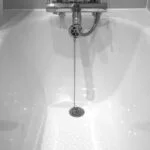Are you looking for ways to ease your anxiety in the comfort of your home? Discover how home decor can soothe anxiety and promote mental well-being. The environment we live in plays a significant role in our overall mental health, and this includes the way we decorate our homes.
From calming colors to natural elements, there are various strategies to create a space that fosters peace and tranquility. In this article, we will explore the connection between home decor and mental health, and how intentional design choices can help alleviate feelings of anxiety.
The impact of our environment on our anxiety levels cannot be understated. Our surroundings have the power to either contribute to or alleviate stress and anxiety. By understanding the influence of our surroundings on our mental well-being, we can use this knowledge to intentionally design a home that promotes a sense of calm. Utilizing calming colors, incorporating natural elements, creating cozy spaces, and paying attention to lighting all play a crucial role in creating an environment that soothes anxiety.
Furthermore, organizational strategies can also have a significant impact on reducing clutter and promoting a sense of calm within the home. Personalizing your space with items that bring you comfort and security is also essential in nurturing mental well-being.
Additionally, using aromatherapy and scents can further enhance the soothing atmosphere within your home. As we delve into each aspect of intentional home decor, you will discover practical tips for transforming your living space into a sanctuary for your mental health.
Understanding the Impact of the Environment on Anxiety Levels
The environment we surround ourselves with can have a significant impact on our mental health, particularly when it comes to anxiety levels. Creating a calming and soothing atmosphere in our homes can be instrumental in reducing stress and promoting a sense of well-being. Research has shown that certain elements of home decor, such as colors, lighting, and organization, play a crucial role in influencing our mood and emotions.
One key factor in understanding the impact of the environment on anxiety levels is the use of calming colors in home decor. Soft pastel shades like blues, greens, and lavenders are known to evoke feelings of tranquility and relaxation. These hues can be incorporated into wall paint, furniture, or decorative accents to create a soothing ambiance that helps alleviate stress and anxiety.
In addition to color, incorporating natural elements into home decor can also contribute to a sense of peace and tranquility. Bringing in elements such as plants, natural wood furniture, or nature-inspired artwork can help create a connection to the outdoors and provide a grounding effect. Studies have found that exposure to nature within the home environment can result in lower cortisol levels and reduced feelings of anxiety.
Utilizing Calming Colors in Home Decor
The colors used in home decor have the power to influence our mood and overall well-being. When it comes to reducing anxiety levels, choosing calming colors can significantly impact the atmosphere of a space. Here are some examples of calming colors to consider incorporating into your home decor:
- Soft blues: Shades of blue can evoke feelings of serenity and calmness, making them an excellent choice for bedrooms and living areas.
- Muted greens: Green is often associated with nature and can create a sense of harmony and balance within a room, perfect for creating a tranquil environment.
- Pale yellows: Soft, muted yellows can bring warmth and positivity to a space, promoting a sense of comfort and relaxation.
In addition to choosing calming colors for wall paint or furniture, you can also incorporate these hues through accent pieces such as throw pillows, curtains, or artwork. By strategically using color in your home decor, you can create an environment that promotes peace and helps soothe anxiety.
Incorporating calming colors into your home decor isn’t just about the visual appeal – it’s also about creating a psychological response within the space. When you surround yourself with soothing hues, you are setting the stage for a more relaxed and peaceful mindset. Whether it’s through soft pastels or earthy tones, the intentional use of calming colors can significantly contribute to nurturing mental well-being within your home.
Incorporating Natural Elements for a Sense of Peace and Tranquility
The Influence of Nature on Mental Well-Being
The presence of nature has been shown to have a positive impact on mental health, including reducing feelings of anxiety and stress. Incorporating natural elements into home decor can help create a sense of peace and tranquility. This could include indoor plants, natural wood furniture, stone or pebble accents, or even nature-inspired artwork. Bringing the outdoors inside can help establish a connection to the natural world and promote a calming atmosphere within the home.
Benefits of Natural Elements in Home Decor
Natural elements not only add aesthetic appeal to a space but also contribute to overall well-being. For example, indoor plants have been proven to improve air quality and reduce toxins in the environment, creating a healthier living space.
In addition, the use of natural materials such as cotton, wool, or jute in furnishings and textiles can evoke a sense of warmth and comfort. The incorporation of these organic materials can create a harmonious ambiance that encourages relaxation and emotional balance.
Tips for Adding Natural Elements to Your Home
Integrating natural elements into home decor does not have to be complicated or expensive. Simple additions such as placing a vase of fresh flowers on a table, displaying seashells or driftwood as decorative items, or using earthy tones in paint colors or accent pieces can all contribute to a tranquil environment.
Additionally, incorporating soft textures like faux fur blankets or plush rugs can mimic the feeling of being surrounded by nature. By intentionally choosing decor that reflects the beauty of the natural world, individuals can create an environment that fosters mental well-being and reduces anxiety levels within their homes.
Creating Cozy and Inviting Spaces to Promote Relaxation
Creating a cozy and inviting space in your home is essential for promoting relaxation and reducing anxiety. By paying attention to the design and layout of your living areas, you can create an environment that encourages a sense of calm and tranquility. Here are some tips for creating a cozy and inviting atmosphere in your home:
- Choose comfortable furniture: Selecting soft, plush furniture such as sofas, chairs, and pillows can help create a welcoming environment that promotes relaxation.
- Add warm textiles: Incorporating warm blankets, rugs, and curtains in your decor can help make your space feel cozy and inviting.
- Create a seating area: Designate a specific area in your home for lounging and relaxation. Whether it’s a reading nook or a window seat, having a dedicated space for unwinding can make a significant difference in reducing anxiety.
In addition to these tips, consider adding personal touches such as family photos, artwork, or sentimental items to your decor. These elements can create a sense of comfort and security, further enhancing the relaxing atmosphere of your home. By prioritizing coziness and comfort in your decor choices, you can significantly contribute to soothing anxiety levels and nurturing mental well-being.
The Role of Lighting in Lowering Stress and Anxiety
The lighting in our homes plays a significant role in affecting our mood and overall well-being. Research has shown that exposure to natural light can have a positive impact on reducing stress and anxiety levels. This is because natural light helps regulate our circadian rhythms, which in turn affects our sleep patterns, energy levels, and mood. In contrast, artificial lighting that is too harsh or dim can contribute to feelings of unease and tension.
Effect of Natural Light
Natural light not only has physical health benefits but also emotional benefits. It has been found to increase the production of serotonin in the brain, which is known as the “feel-good” hormone.
Sunlight exposure can also reduce symptoms of seasonal affective disorder (SAD), a type of depression that occurs at a certain time of year, usually in the winter when there is less natural sunlight. To maximize the amount of natural light in your home, consider using sheer curtains or blinds that allow sunlight to filter through while maintaining privacy.
Creating Ambiance With Lighting
In addition to natural light, the use of artificial lighting can also create a calming ambiance in your home. Soft, warm-colored lights can promote relaxation and comfort, while harsh, cool-colored lights may increase feelings of stress and anxiety. Consider using dimmers or smart bulbs that allow you to adjust the brightness and color temperature based on your activity or mood throughout the day.
By understanding the impact of lighting on stress and anxiety levels, you can make intentional choices about the types of lighting sources and fixtures you incorporate into your home decor. Whether it’s maximizing natural light or creating a soothing ambiance with artificial lighting, these adjustments can significantly contribute to promoting a sense of calm and tranquility in your living environment.
Organizational Strategies for Reducing Clutter and Promoting a Sense of Calm
Utilizing organizational strategies to reduce clutter in the home environment can have a significant impact on promoting a sense of calm and well-being. The presence of clutter has been linked to increased stress levels and feelings of anxiety, so implementing effective organizational techniques is crucial. One strategy is to declutter regularly by getting rid of items that are no longer needed or used. This can help create a more spacious and harmonious living environment.
Another useful organizational strategy is to invest in storage solutions that help keep belongings organized and out of sight. This can include furniture with built-in storage, decorative baskets, or shelving units. By having designated spaces for items, it becomes easier to maintain a tidy and peaceful living space. Additionally, organizing belongings according to categories can make it easier to find things when needed, reducing frustration and feelings of overwhelm.
Implementing a minimalist approach to home decor can also contribute to reducing clutter and promoting a sense of calm. By focusing on quality over quantity and being mindful of what items are brought into the home, it is possible to create an environment that feels more open and tranquil. This intentional approach to the belongings in the home can help foster a greater sense of ease and relaxation.
| Organizational Strategies | Promoting Calm |
|---|---|
| Regular decluttering | Creating spacious environment |
| Investing in storage solutions | Maintaining tidy living space |
| Minimalist approach | Fostering relaxation |
Personalizing Your Space to Enhance Feelings of Comfort and Security
One of the most effective ways to soothe anxiety through home decor is by personalizing your space. Creating a home environment that reflects your personality, interests, and cherished memories can greatly enhance feelings of comfort and security. By surrounding yourself with familiar and meaningful items, you can create a sense of belonging and stability, which can help alleviate anxiety.
When personalizing your space, consider displaying photographs of loved ones, artwork that resonates with you, or items that hold sentimental value. These personal touches not only add character to your home but also serve as constant reminders of joy, love, and positive experiences. Additionally, incorporating items from nature such as seashells, rocks, or plants can bring a sense of calmness and connection to the environment.
Another way to personalize your space is by creating designated areas for activities that bring you joy and relaxation. Whether it’s a cozy reading nook, a meditation corner, or a crafting area, having spaces dedicated to activities you enjoy can contribute to overall well-being. By intentionally designing these areas with decor that reflects your interests and passions, you can promote a sense of fulfillment and contentment within your home.
Incorporating personalized elements into your living space not only adds visual appeal but also plays a significant role in promoting mental well-being. By surrounding yourself with items that are meaningful and comforting to you personally, you can create an environment that nurtures feelings of comfort, security, and happiness, ultimately helping to alleviate anxiety.
Using Aromatherapy and Scents to Create a Soothing Atmosphere
Aromatherapy is a practice that uses natural plant extracts, such as essential oils, to promote physical and mental well-being. When it comes to home decor, using aromatherapy and scents can significantly contribute to creating a soothing atmosphere that helps in reducing anxiety levels.
The sense of smell is closely linked to the emotional center of the brain, which means that certain scents have the power to evoke specific feelings and emotions. By strategically incorporating aromatherapy into your home decor, you can create a calming environment that promotes relaxation and reduces stress.
One of the most popular ways to use aromatherapy in home decor is by utilizing essential oil diffusers. These diffusers release a fine mist of water and essential oils into the air, allowing the scent to permeate throughout the room.
You can choose essential oils with calming properties such as lavender, chamomile, or ylang-ylang to create a serene and tranquil atmosphere in your living space. Additionally, you can also incorporate scented candles or reed diffusers in your home decor to add a pleasant fragrance to different areas of your home.
In addition to promoting relaxation, certain scents have been found to have mood-boosting effects. For instance, citrus scents like lemon and orange are known for their refreshing and uplifting properties.
By strategically incorporating these scents into your home decor, you can create an environment that not only soothes anxiety but also enhances overall well-being. Whether it’s through natural essential oil diffusers or scented candles, using aromatherapy and scents in your home decor can play a significant role in creating a soothing atmosphere that contributes to better mental health.
Conclusion
In conclusion, it is evident that intentional home decor can have a significant impact on nurturing mental well-being, especially in reducing anxiety. As we have explored throughout this article, the environment in which we surround ourselves can directly influence our stress levels and overall state of mind. By understanding the impact of colors, natural elements, lighting, organization, personalization, and aromatherapy in our home decor choices, we can create a space that promotes feelings of calm and tranquility.
Furthermore, incorporating calming colors such as soft blues and greens, utilizing natural elements like plants and wooden accents, and creating cozy spaces with comfortable furniture all contribute to a sense of peace and relaxation in our homes. Additionally, implementing proper lighting and organizational strategies can greatly reduce clutter and promote an overall feeling of calmness. Personalizing our space to enhance feelings of comfort and security also plays a crucial role in soothing anxiety.
Ultimately, it is important to recognize the power that intentional home decor has on our mental well-being. By making thoughtful design choices that prioritize relaxation and comfort, we can create a sanctuary within our homes that supports our emotional health.
Whether it’s through using aromatherapy or simply choosing calming color palettes, every decision we make in decorating our living space has the potential to positively impact our overall state of mind. So let’s be mindful about how we decorate our homes because the benefits for our mental health are truly invaluable.
Frequently Asked Questions
What Home Decor Reduces Anxiety?
Certain home decor elements can help reduce anxiety, such as calming colors like light blues, soft greens, and neutral tones. Adding plants, natural materials like wood or stone, and soft lighting can create a soothing atmosphere. Decluttering and organizing the space can also promote a sense of calm.
What Is the 3 3 3 Rule for Anxiety?
The 3 3 3 rule for anxiety involves taking note of three things you see, then three sounds you hear, and finally moving three parts of your body. This mindfulness exercise can help ground you in the present moment and shift your focus away from anxious thoughts.
How Can I Make My House Anxiety Friendly?
To make your house anxiety-friendly, consider incorporating cozy textures like blankets or throw pillows to create a comforting environment. Creating designated relaxation spaces, adding soothing scents with essential oils or candles, and minimizing noise distractions can also contribute to a more calming atmosphere at home.
Incorporating personal touches and meaningful decor items can also promote a sense of security and well-being.

I’m thrilled to be your companion on this exciting journey through the world of home decor and design. With a passion for turning houses into homes and a keen eye for the finer details, I’m here to help you transform your living spaces into beautiful, functional, and meaningful havens.





